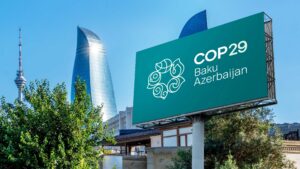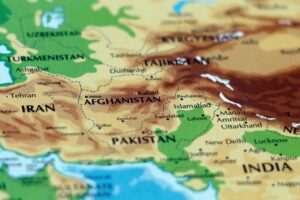Climate change and the Middle East can seem like two opposing forces, since the Middle East is home to the most influential and powerful petrol companies in the world. Climate change has been a critical issue that scientists have spoken about for decades, but it was only recently that it became a current global issue due to an international uproar within younger generations – due in part to climate activist Greta Thunberg’s famous ‘Fridays for Future’ strikes.
Whether they like it or not, countries from the Middle East will be affected by the rise of temperatures which causes high levels of evaporation, resulting in water scarcity. The symbolic Dead Sea has receded at a swift rate due to the falling water level. Rising sea levels are threatening to flood major maritime cities such as Jebel Ali in the UAE or Alexandria in Egypt. Countries in the Middle East will need to take actions immediately if they want to efficiently reduce the consequences of climate change in their regions. Currently, the loss of biodiversity is causing a downfall in food production; creating a potential food crisis that most countries in the region are not ready to deal with. Studies have concluded that by 2030, climate change will have an impact on the economy of the Middle East, with a loss of 1% of their GDP, equivalent to 6.57 billion dollars. The country which will be affected the most is Oman, which will lose 2.1% of its annual GDP. If these countries do not make a fundamental change to their approach to climate change, this trend is likely to become a tough reality. However, if efficient measures were to be applied, the impact on GDP may be limited in the next decade. For instance, Yemen, which is currently ranked the 30th most vulnerable country, would be able to gain 1% of its GDP.
The Paris Agreement in 2016 brought together many nations for the first time over a common cause: to undertake ambitious efforts to combat climate change and adapt to its effects. They agreed to limit global warming below 2°C above pre-industrial level. It was also a place to talk about the complex relationship between climate change and the governance in the MENA region. Following this Agreement, most Middle East countries signed the treaty, including Egypt, Iran, Israel, Kuwait, Libya, Oman, Qatar, State of Palestine and the UAE. They are now officially part of the fight against climate change. The world agreed to maintain global warming at 1.5°C, but carbon emissions are still rising and the GIEC scientists are predicting it will exceed 3°C by 2100. As a result, Saudi Arabia had said that it will try to decentralize its economy and focus on water management. All of that said, practical measures taken by Middle Eastern countries to tackle global warming remain scarce. With the UAE’s minimal reduction in carbon emissions and the lack of data provided by Arab countries, it is hard for the international committee to believe that meaningful change is occurring in these regions.
Like most developing countries, the Middle East is seeking for economic prosperity and international exposure. Therefore, it is burying its head in the sand to avoid seeing, and dealing with, the environmental issue. Countries in this region hold around 60% of the world’s oil reserves and 30% of gas reserves, making them a hub for international maritime oil and gas trades. This trade contributes to one third of worldwide carbon emissions, making them major actors in climate change. In addition, several Middle Eastern countries are among the world’s top carbon emitters per capita. For instance, Qatar’s carbon emissions reach fifty tonnes per capita while the United States, which is over 800 times bigger, has a carbon footprint of nineteen tones per capita. With an overall high carbon footprint and a high “human development index”, the Arab region is in a situation that will force them to move towards green and sustainable solutions in order to maintain their high-quality of living. Scientists and engineers are globally conducting research to find new renewable energies for the Middle East. The Middle East is now being encouraged to follow in the steps of Switzerland. In 2017, a Swiss company became the world’s first industry to commercially remove carbon dioxide from the air and transform it into a useful product. If the Middle East did the same, they could stock huge amounts of carbon dioxide in the oil wells created by the petrol industry, while waiting for future engineers to find a way to transform it into a new green energy. If this project was to become a success, the Middle East would become the saviours of the planet.

















